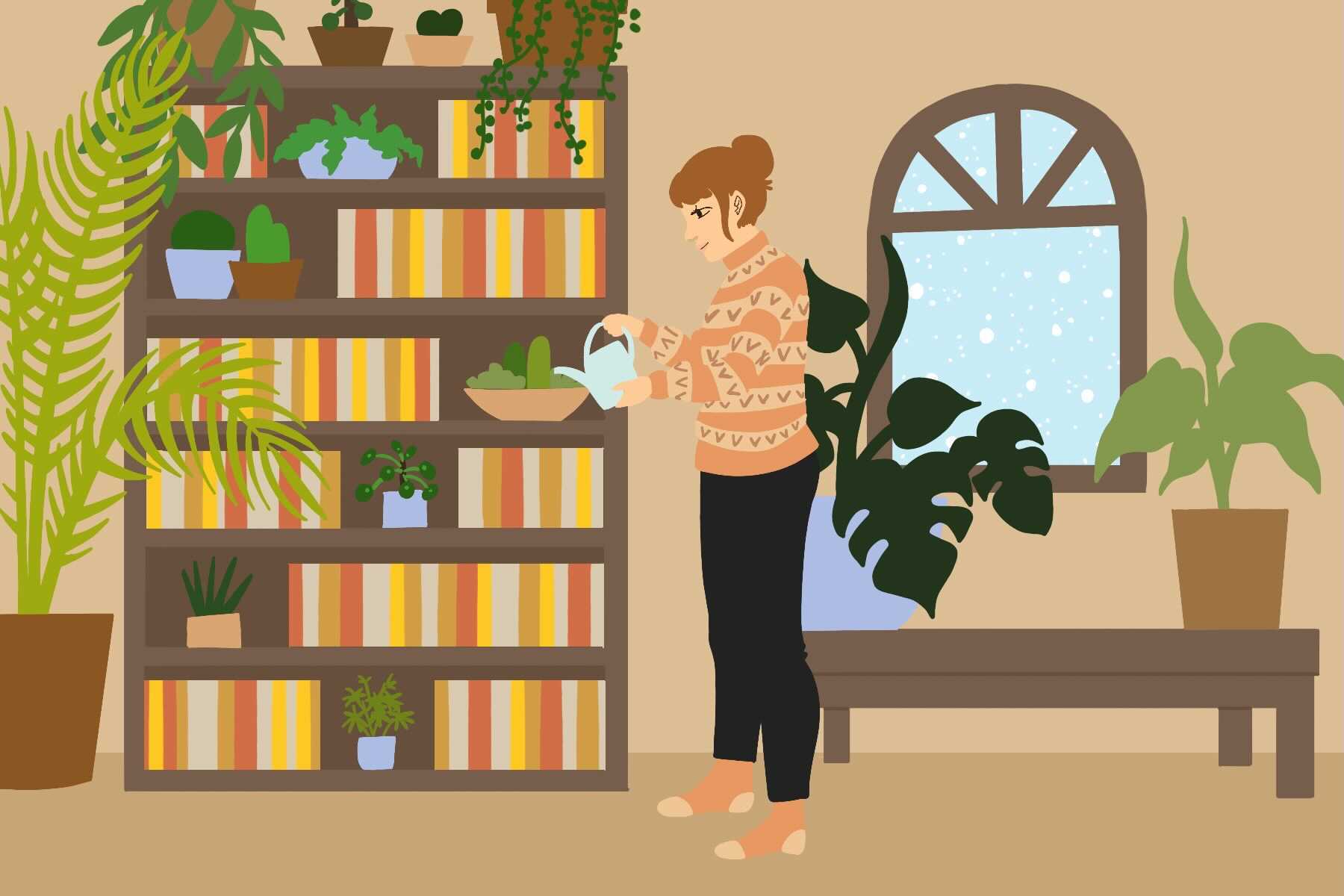As the winter season approaches, days become shorter, nights grow longer, the weather gets chilly, skies turn grey and nature fades away. No wonder many people feel melancholic this time of year. Not only do people become gloomy, but certain people also struggle with a kind of depression called seasonal affective disorder, or SAD. However, some practices can help soothe the soul during the darkest time of the year. One highly beneficial hobby is indoor gardening.
Rebecca Joy Stanborough wrote an article that provides information about the many benefits related to indoor plants, such as reduced stress, depression and anxiety. Indoor plants can improve productivity, focus and create a new perspective. Some plants can also enhance the air quality in the rooms they inhabit. Doctors sometimes prescribe horticulture therapy to patients for various reasons, including individuals struggling with symptoms of mental illness.
Necessities for Thriving Plants
Water, light and nutrients are essential for plants to grow, but the needs of each species vary. The main thing to remember is that plants need a daily light source. Make sure to place your plants in locations where they can either receive enough natural light or benefit from a plant light substitute that you can control manually or with a timer.
The leading killer of indoor plants is overwatering. Plants protected from the elements do not require the same amount of water as their outdoor counterparts. Each plant must have its soil checked daily to ensure adequate moisture. Harli G provides great watering techniques for indoor plants.
Plants obtain most of their nutrients from the soil. The kind of soil mixture you need will depend on the plants you grow. It’s not as simple as digging up dirt from outside and tossing it into a pot; the YouTube channel This is a Plant provides easy soil-starter tips to help get the gardening process rolling.
Indoor Garden Options
Indoor gardening presents various plant options, ranging from decorative to edible. One food style is an indoor herb garden, which supplies ingredients for cooking and making teas. Depending on how many herbs you grow, these plants do not take up much space. Pruning keeps them at the preferred size, and the clippings become edible ingredients for your concoctions. Not to mention the delicious aromas they add to the room.
An indoor food garden can thrive inside your home, though it is more limited than the herb garden due to space and other requirements. Some vegetables that grow well indoors are tomatoes, bell peppers, mushrooms, beans, kale, carrots, microgreens, radishes, spinach, lettuce and potatoes. Dwarf fruit trees make excellent additions to an indoor garden as well.
A houseplant garden is an excellent choice for a nonedible yet vibrant addition to your home. It also offers the most variety with the many sizes and colors of plants available. The golden pothos, lucky bamboo and palms will breathe life into any room with lush green colors. Moth orchids add a bright splash of color, and anthuriums, with their deep red flowers, make a charming addition to any indoor garden.
A more accessible, hands-off alternative is an indoor cactus garden. Cacti are as unique as they are pointy. They come in many shapes, sizes and colors. Although they are hard on the hands, they are easy on the eyes. The main thing to remember with cacti is that they require minimal water and good soil drainage.
A similarly simple yet touchable low-maintenance option is a mini succulent garden. Succulents do not come in as many variations as cacti, but they still make lovely indoor gardens. The many potting possibilities can compensate for their lack of allure.
Indoor Gardening Styles
Indoor gardening does not follow a cookie-cutter approach; there are numerous variations. Eclectic styles use different pots and plants to create a unique arrangement throughout your home. There are multiple options for creating a hanging or vertical garden to save space. For example, terrarium gardens can inspire some innovative and creative ideas. Other options such as floating shelves make a lovely indoor garden display. If an enclosed garden is more desirable, there are many crafty ways of building an indoor greenhouse.
Just about anything can make a happy home for a lucky plant. Using the internet, you will find many tips, instructions and ideas for creating the perfect indoor garden that suits your personality. Books covering the topic are just as abundant, too. The only limitation is your imagination.
Safety Tips
Before beginning your indoor garden, you must know a few things, especially if you have children or pets. Before bringing any plants into your home, check if they are toxic. Ensure that your cactus garden is out of children’s reach if you plan to have one. Make sure your garden-style choice does not become a hazard for either kids or pets, as plants are something they can easily knock over or hurt themselves with.
Also, take into consideration the safety of your plants. Cats, dogs and birds take joy in chewing them; don’t let your new indoor garden become someone’s favorite chew toy. Jillian Kramer offers a few suggestions on how to keep your fur/feather babies from mutilating your plant babies.
Remember this for all living creatures in the home: Plants carry bacteria, fungi and other necessary microorganisms that help them flourish. As long as the plant is well-cared for and no one has any allergies, these microorganisms cause no harm. When a plant experiences stress, these microorganisms can get out of control, and one consequence is that mold can start to grow in the soil. Similarly, sick plants attract unwelcome insects, so research the requirements of your desired garden and keep it a manageable size based on your busy schedule.
Mother Nature plays a crucial role in human well-being, which becomes more apparent in the winter months when nature goes dormant. Greenspace gives you a sense of calm and tranquility and keeps the beauty of nature in your life all year long, alleviating those unwelcome SAD symptoms. Though some of the work required to start an indoor garden might initially feel tedious and cumbersome, once the setup is out of the way, all that’s left is to focus on creating a steady care regimen for the welfare of your plants and yourself.

















